Introduction
The progress of human society has made it possible to reach great heights and will continue to create socio-economic and technological benefits that qualitatively improve the quality of life of communities. To date, the chemical, military-defense, and healthcare industries are well developed since the product of their activities directly affects the perceived level of safety of life and comfortable living. However, as often happens, some of the most advantageous vectors of development turn out to be the most dangerous at the same time. In fact, the products of all the above-mentioned industries pose a serious threat to national and regional security; they can lead to disasters and emergencies. History knows many examples — including Chornobyl and, Fukushima, COVID-19 — when the development of scientific progress, initially aimed at improving the quality of life and creating new discoveries, led to critical consequences that took the lives of millions of victims.
In case of unintended consequences, there is an elaborate program to contain and eliminate them. This forms two strands of emergency management: on the one hand, actions are aimed at the prevention and preventive containment of crisis conditions, and on the other hand, post-factum handling of a disaster that has already occurred. It is true that each country has its own spectrum of most likely threats, and it is clear that those who live closer to potential sources of radiation or clinical laboratories for growing new pathogens are at the most significant risk. Because each country’s threats vary, there are individually tailored programs to respond quickly to disasters. For Qatar, the NCC, the first large-scale Gulf project, was created (Ebrahim & Osama, 2020). The NCC’s functional responsibilities include ensuring communications between the various subordinate agencies within the country to create a unified map of probabilistic threats and to ensure that the work undertaken is not only preventive but also sharply remedial.
While it is true that each country’s threats are unique, there are some common patterns that allow governments to share experiences and improve emergency management practices. In particular, there is a pool of combined threats called the acronym CBRNE: this includes chemical, biological, radioactive, nuclear, and explosive threats. Any of these threats affect different locations to varying degrees, but it seems clear that the likelihood of a nuclear disaster is much less likely due to politically deterrent mechanisms than the likelihood of terrorist bombings, which has been a common practice in recent decades. CBRNE theorizes common levels of different threats and allows us to systematize them in order to improve rapid response and preventive management practices. In reality, however, each individual case is difficult to model because too many variables and factors are involved in the realization of a threat. For example, one of the most pressing biological-scale disasters, COVID-19, quickly escalated from a localized disease in the Chinese city of Wuhan to a planetary hazard that significantly impacted all aspects of humanity (Zhao et al., 2021). Alternatively, the accidental explosion of Unit 4 at Chornobyl, as a result of a systematic error by local personnel, not only destroyed the possibility of life in that Ukrainian city but also affected the surrounding areas, contaminating them with radiation for hundreds of years (Zheltonozhsky et al., 2021). Although both COVID-19 and the Chornobyl accident are not strictly terrorist, as the CBRNE definition implies, the cause of such disasters is still an anthropogenic factor that led to the development of dangerous consequences.
The purpose of this portfolio is to theorize knowledge on the broad issue of the significance of CBRNE, exploring ways to respond and practices, including through real-life examples. To concretize the analysis, the report uses the state of Qatar as a volume for study. In particular, the focus is on the principal seaport of Hamad, south of Doha: as shown in Figure 1. The port is strategically important from an economic and political perspective, so providing preventive management and an emergency response plan is critical for Hamad. This will allow subordinate organizations to fully protect not only the port area but the whole of Qatar.
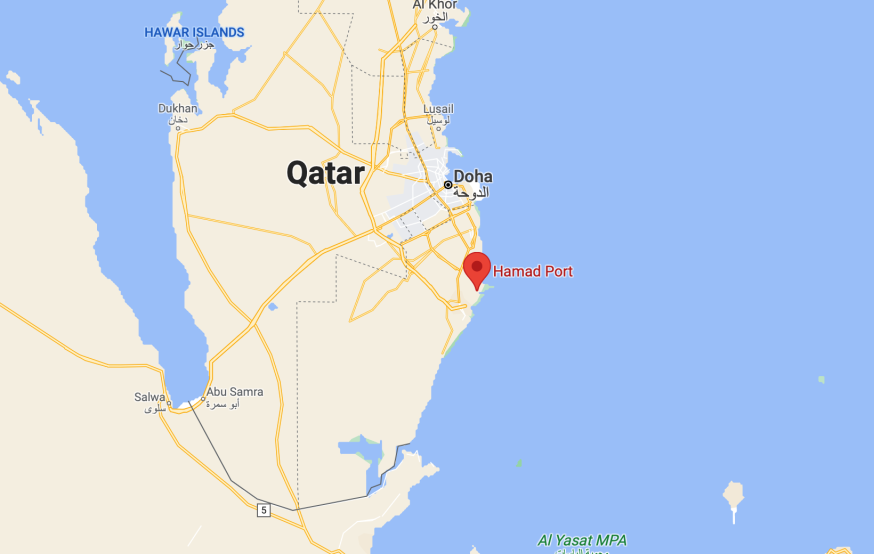
Definitions and Explanation of CBRNE
The potential threats to the Qatari terrain are extremely high, not only because the country is located in a seismologically active area. In fact, Qatar is an active partner in the international coalition to counter the terrorist threat originating from ISIS (Bureau of Counterterrorism, 2019). Qatar is constantly creating new reforms and initiatives to eliminate terrorism and is actively cooperating with the U.S. by providing U.S. troops with deployment opportunities. On the other hand, there is a diplomatic crisis regarding Qatar, as the global public often accuses the country of covertly facilitating terrorism (U.S. Government Publishing Office, 2017). Taken together, this creates the potential for terrorist attacks by terrorist organizations. This includes any threats using violent methods. It is for this reason that the specifics of CBRNE’s applicability to the port of Hamad and Qatar as a whole must be critically assessed.
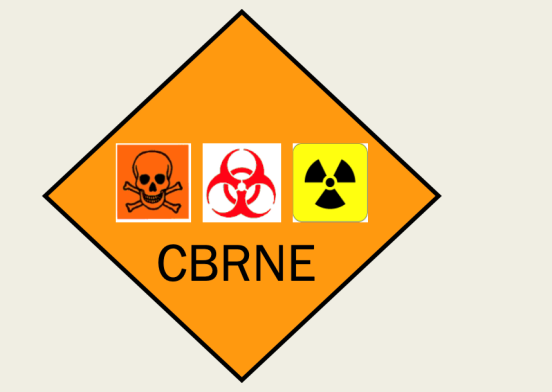
It is worth saying that CBRNE is a universal concept that summarizes multiple threats in terms of chemical, biological, radioactive, nuclear, and explosive scales (Figure 2). It is not a tangible concept but rather a terminological generalization to systematize and connect multiple threats. The application value of such a generalization is clear: by theorizing about these hazards, it creates a positive opportunity to develop emergency management plans and models all the possible threats that may be relevant to the Hamada area. In general terms, CBRNE is any threat of artificial origin that can lead to mass casualties and crisis consequences in the long term. CBRNE, on the other hand, is both a set of protective measures aimed at ensuring passive safety and eliminating threats that have already occurred.
Chemical Factor
The first letter in the acronym refers to threats of chemical significance that can cause massive damage. This includes poisoning with substances that, even in trace amounts, may be incompatible with life. These include the classic poisonous substances traditionally used for combat purposes: chlorine, sarin, cyanides, “Novichok,” and phosgene. The peculiarity of these agents is that some of them are heavier than air (chlorine, phosgene), while others (ammonia, carbon monoxide) are lighter.
Biological Factor
The second letter in the acronym CBRNE refers to any threat of biological magnitude when the safety of human life is threatened by pathogens. These are usually deliberate actions by individual terrorist organizations to release dangerous bacteria, fungi, and viruses. However, unintentional, accidental attacks caused by negligent laboratory personnel and failure to follow microbiological safety protocols are also included. The most current example of such a threat is COVID-19, which was most likely accidentally released from the Wuhan laboratory, but there is no direct evidence of this.
Radioactive Factor
The third letter in CBRNE belongs to the threat posed by sources of radioactive contamination. It is known that some chemical elements can emit alpha, beta, and gamma rays with different transmittance and health hazards. Energy is released in nuclear collisions that rearrange the configuration of atoms. Thus, radioactivity helps to produce other elements from some elements — which was a key task of alchemical traditions — but in such transformations, the levels and quality of the energy released are too threatening. Such radiation is invisible but easily detected by detectors, including a Geiger counter.
Nuclear Factor
Radioactive contamination is often a concomitant component of a nuclear attack, defining the fourth letter in the acronym. Nuclear attacks are realized when nuclear fuel, usually based on the fission of Uranium-235 nuclei, explodes. It is one of the most extensive hazards since the effects of a nuclear explosion are not only due to the spread of radiation and thus contamination of the area, but also to the associated hazards: the blast wave, the powerful light radiation, and the electromagnetic pulse.
Explosive Component
The last letter in the acronym, which is often omitted by other authors, is the explosive threat. Terrorist attacks blow up houses and vehicles, destroy historical heritage sites, and hurt people. The history of the last decades knows many cases of real terrorist attacks: the 9/11 attack in the United States, the hostage-taking in Mecca, the Boston Marathon bombing, the takeover in Afghanistan, the terrorist attacks in Paris and Brussels: these are just some of the most high-profile attacks of the last forty years. Political tensions between nations continue to rise, expanding the potential for new attacks.
Hazards and Risks
The central risk of each of the threats is the infliction of massive damage resulting in widespread loss of life. Explosions, the spread of disease, and chemical contamination are all primarily intended to kill people en masse, which has intimidating purposes. Radioactive contamination, in contrast, has a long-term perspective, as only being at the epicenter of radiation for a few hours can lead to quick death; otherwise, victims die within months or years of progressive radiation sickness (Calzolari, 2019). Finally, a nuclear explosion appears to be the least likely risk because there are enough international initiatives to contain the threat of a nuclear explosion.
The Qatari port of Hamad, as a geographical space open from the sea, is characterized by any threats from CBRNE, with the threats of terrorist attacks in the form of bombings (E) and chemical attacks (C) being the most likely due to the proximity of the state to ISIL locations: Syria, Iraq, and partly Saudi Arabia. These countries have no recorded stockpiles of nuclear weapons, which means both nuclear attacks (N) and radioactive contamination (R) are the least likely for the port of Hamad. Biological weapons used against local residents are also likely because the port is active and thus actively receiving foreign ships, which could be sources of intentional or accidental pathogens to the area.
Effects
The climatic conditions of the Port of Hamad are suitable for the rapid spread of airborne chemical toxins. Using the airflow simulations shown in Figure 3, it was determined that most of the wind in the port has a northwesterly origin: the states of Iraq, Syria, and Saudi Arabia are in the same direction. Consequently, gaseous poisoning spraying could result in damage to local residents and minimal damage to terrorists. Damage could result in respiratory system impairment, cognitive degradation, and death.
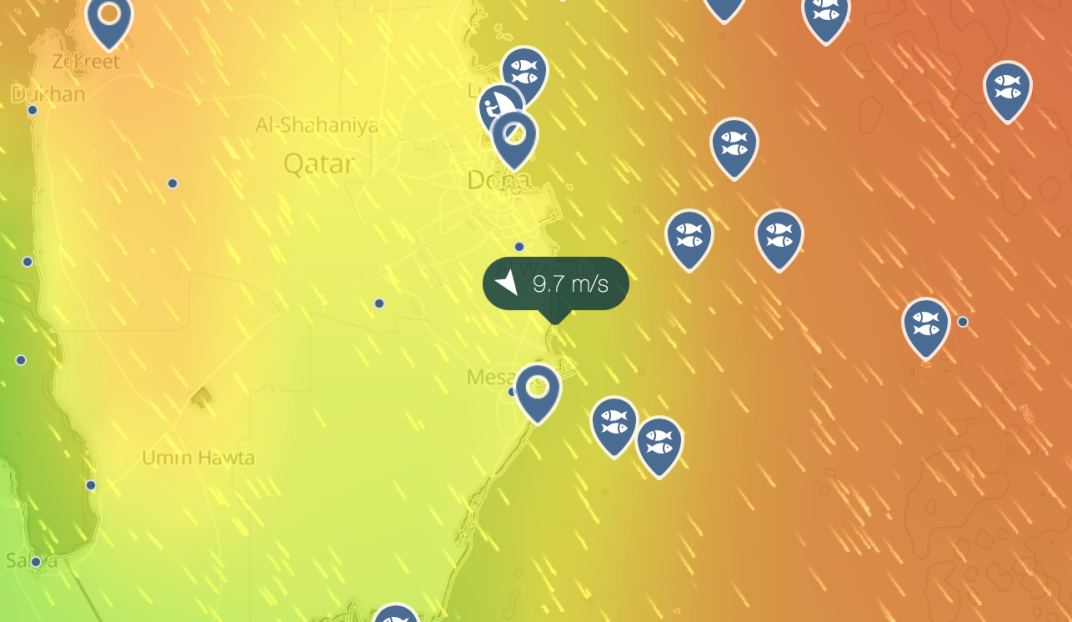
The effects of biological weapons are also devastating for the Qatari population, given the accessibility of the port of Hamad. Hidden pathogens could be invaded into the area, resulting in a local epidemic that kills thousands of residents. Radioactive radiation released as a consequence of a nuclear attack or through sabotage against the people will lead to the development of genetic breakdowns and radiation sickness. It is noteworthy that the nearest radioactive contamination sensors are located near Doha Airport (Figure 4), 35 kilometers from the port.
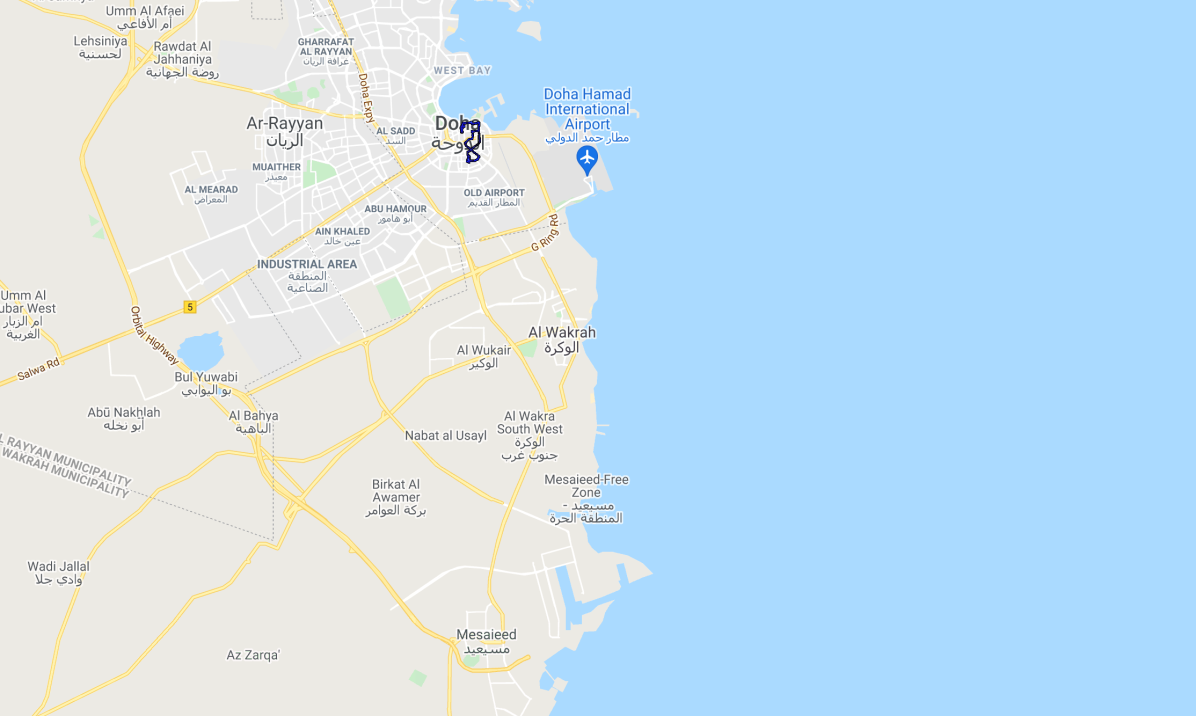
In terms of the nuclear threat, the effects are not only radioactive contamination but also related factors. The blast wave destroys buildings and causes physical damage to health, and the light radiation has the ability to blind people. In addition, short-term electromagnetic radiation causes electronic devices — including pacemakers — to malfunction. Finally, the effects of an explosive disaster result not only in human bodies being torn apart but also in lethal damage caused by shrapnel, elevated epicenter temperatures, and a shock wave.
Analysis of Current CBRNE Response Resources
At the moment, there are several fragmented CBRNE structures in the Port of Hamad and in Qatar in general. One of them is the HMCAS program, which provides logistics and rapid response to emergencies, with a focus on safety for public health. Research shows that HMCAS is well designed, but the human factors, including preparedness and training, need refinement (Farhat et al., 2021). In addition, it was found that a great emphasis prior to 2016 in Qatar was on protecting specifically against nuclear threats, but biological and chemical weapons were overlooked (The European, 2020). Therefore, in recent years, the EU CBRN CoE initiative was created to look at CBRNE threats holistically, conduct relevant training and raise the overall level of national threat preparedness.
It is also noticeable how the Qatari authorities are actively developing beneficial military-political cooperation with other states. In particular, a bilateral act of cooperation was signed with West Virginia in the summer of 2021 to jointly implement emergency management and preventive control of man-made disasters (Nelson, 2021). Finally, the strongest resource for emergency management is the NCC, established in Qatar in 2006 (Nabeela, 2021). During disasters, the NCC is empowered to manage evacuation and response through extended collaboration with local agencies. The NCC has a hotline to contact the public and early warning systems for a preventive response. However, all centers and most hospitals are concentrated in the capital, and there is nothing in the vicinity of Hamad Port. Consequently, current resources in Qatar are developed but not widespread enough to provide full coverage in case of emergency response.
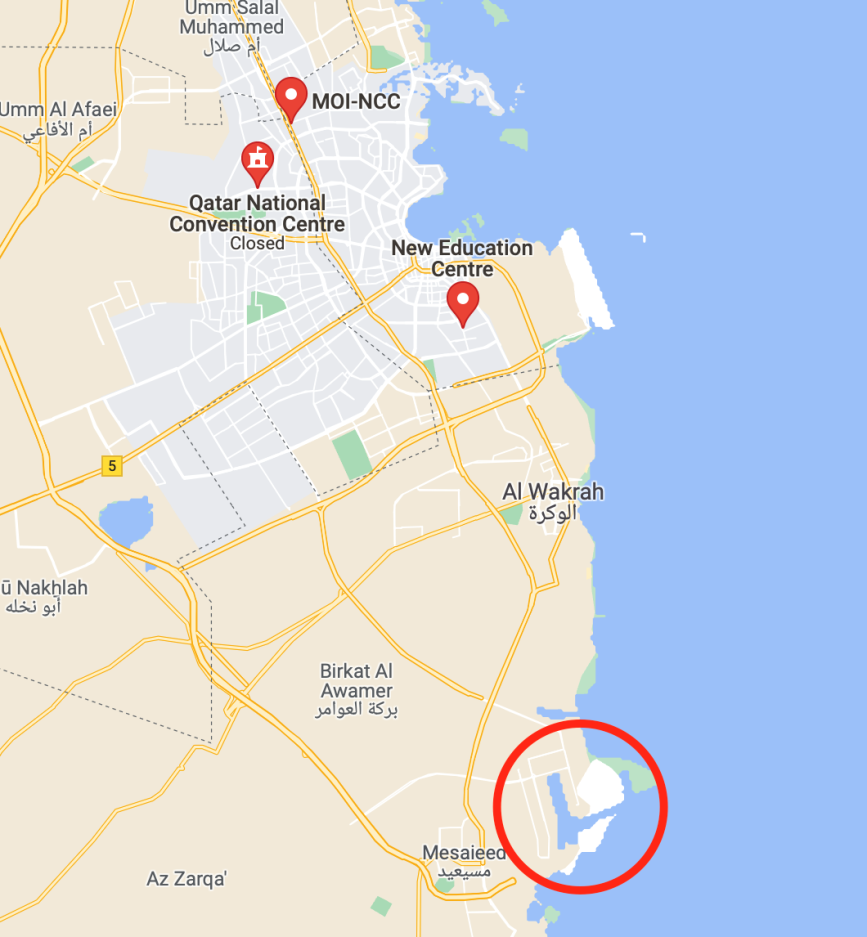
Analysis of current CBRNE Response Procedures/Arrangements
Current Practices
To date, several civil defense practices are being implemented in Qatar. Among them, the large-scale Milipol Qatar event, which showcases the latest advances in the defense industry for emergency management. For example, one of the developments is the Iveco LMV, an advanced vehicle that withstands powerful physical forces and allows access even to hard-to-reach places during accidents (Photo 1).
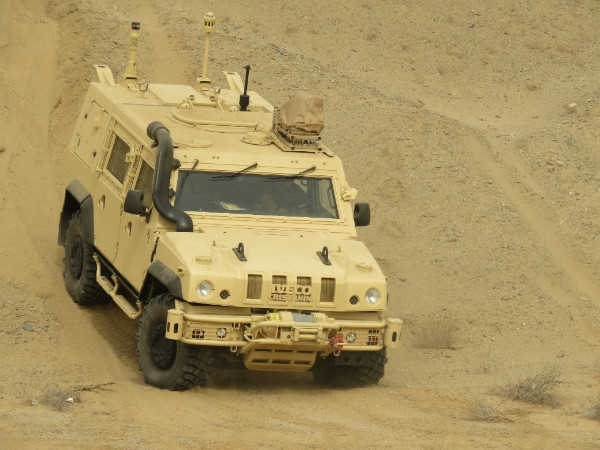
In Qatar, there is an “Emergency Medical Dispatcher” who ensures the control of communications in case of emergencies. Among the duties of this specialist is to “alert the Supervisor on a variety of issues to include: incidents that have the potential to become large scale including all (CBRN) incidents…” (QCHP, 2021, p. 45, para. 2.2.10). In addition, Qatar has a separate regulatory program for seaports, including Hamad, to ensure “safe navigation, maritime operations, emergency response, marine protection, and health and safety of people” (Harbor Master Office, 2018, p. 17). Among others, this uses a system of port entry permits, without which no vessel can be docked at Hamad (Figure 6).

Problems Identified
A critical evaluation of current civil defense practices shows that no particular problems were identified. However, relatively little information was found on the specifics of the operation, especially in the Hamada port area: thus creating a barrier to transparency. It is not possible to judge with complete certainty the development of the national CBRNE security system, as insufficient constructive information was found.
Roles and Responsibilities of all Responder Agencies
In the Port of Hamad, as in Qatar, there is a practice of cooperative problem-solving in emergency response. As mentioned above, the main management body is the NCC Command Center, which provides seamless communication in case of incidents. It is pointed out that the NCC operates around the clock and divides the general area of the state into separate sectors, making it easier to respond to emergency forces (HMC, 2020). In addition, the NJM program has been developed, which provides geographic security for Qatar’s regions through a single geodatabase: NJM is reported to be a more advanced system than the NCC (Ebrahim and Osama, 2020). Qatar’s Q-CERT agency is responsible for national information protection; although information protection seems unrelated to CBRNE, in reality, many terrorist threats are only realized through digital unit communications. For example, many terrorists are known to use Telegram to communicate (Tan, 2017). Accordingly, Q-CERT is responsible for an essential part of civil defense in the country.
The civil defense sector is implemented not only by public resources but also by private companies. For example, Global Guardian provides travel protection services in case of emergencies: “clients can contact us via our GPS beacons, satellite phones, mobile apps, or by texting or calling our 24-hour Global Operations Center, and we… to accomplish our client’s mission,… personal security, vehicles, and aircraft if necessary” (GG, 2021). Finally, there is a single 999 phone number where any resident can call the CBRNE Support Center urgently, allowing civilian services to respond promptly to a problem.
Analysis of Equipment and Procedures for Mass Decontamination
Civilian equipment in Qatar is either domestically produced or imported from abroad as part of an import program. Thus, it is indicated that U.S. exports provide several important technologies supplied to the local market to manage cybersecurity in the country (Trade, 2020). In particular, cybersecurity improvements prevent the deleterious effects of network warfare and provide large-scale monitoring, electronic security, and detection of chemical and pathogen leaks. The performance of military equipment is tested annually in the joint exercise “Invincible Sentry” with the U.S., which assesses the Qatari army’s readiness to confront a civilian crisis (Bradford, 2021). In 2020, it was reported that the Qatari Joint Special Operations Forces had purchased new armored vehicles used for civil security defense purposes (Photo 1). The vehicles were already in service with Qatari civilian forces, but the acquisition of additional units indicates a growing need to provide more comprehensive protection.
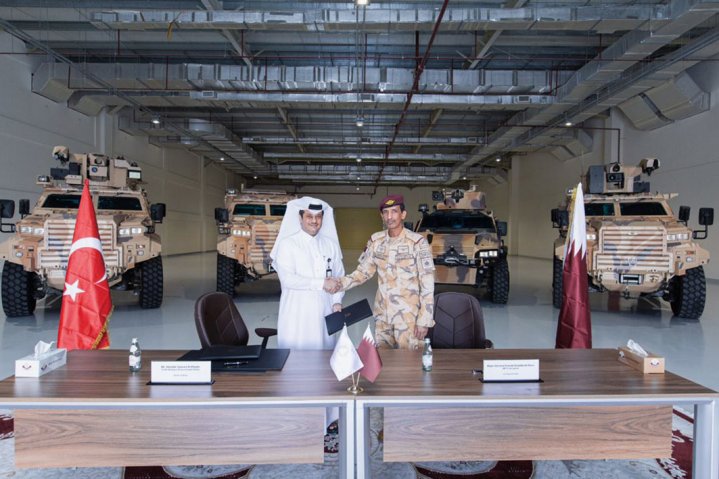
Additionally, it is reported that the Qatari military forces have several units of F-15QA combat aircraft: these vehicles can be used to prevent large-scale terrorist attacks, as well as for faster and more maneuverable access to man-made disasters occurring in an area difficult for civil aviation or helicopters. In addition, the equipment of the civil defense services includes special protective suits, respirators and gas masks, fire extinguishers of various variations, and cars designed to extinguish fires. This is classic equipment of the military-defense industry, without which the protection services cannot function.
As before, not enough transparent information is provided to study all the technologies in the arsenal of the CBRNE services in Qatar. Information is either concealed or not published in English. However, it is worth emphasizing that every year the country hosts a large-scale civil defense conference in which different countries share experiences and showcase their developments that can be acquired by the Qatari government to improve emergency management practices.
Recommendations
A critical assessment of current civil defense and emergency management practices shows that Qatar has a well-developed system of preventive control and response, but it remains imperfect. Despite recent technological advances, improved international cooperation, and system reform, not enough positive transformation is taking place in the country. The presence of centralized management from Doha leads to a lack of representation of civil defense offices in remote regions of Qatar, including the seaport of Hamad. Thus, it is appropriate to implement several recommendations that are proposed as tools to change the current agenda.
First, new offices should be opened outside the capital to provide a better experience of caring for civilian welfare on the ground. It has been shown that there are no NCC offices in the Hamad port area, which means that in the case of CBRNE threats here, defense forces would travel dozens of kilometers before managing the situation. The initial costs of such a recommendation are extremely difficult to calculate since it includes not only the purchase of real estate — or the lease of a room — but also the establishment of communications, the purchase of additional equipment through government procurement, the training of local specialists, the implementation of regular training programs, and many additional items of expenditure not apparent at first glance.
Second, it is necessary to significantly increase the number of radioactive contamination detectors because so far, they are located only in the capital. For example, one could be limited to Soeks, a small portable device that would be placed on the streets of the city. The cost of one such device reaches about $400, and a total of about 20 devices is needed to cover the Hamad port area (Soeks, 2022). At the municipal level, however, more advanced, self-contained radioactivity detection devices are proposed. For example, the ANV-S2-FV device could be used, but the price of the device is not a piece of publicly available information.
Third, it is necessary to improve the practice of cooperation between civil defense services and clinical organizations in order to minimize casualties after accidents. The main costs, in this case, are imposed by the development of a cooperative program and joint training. It is estimated that it costs organizations up to $1250 per year to maintain a high level of competence and training (Markovic, 2020). This amount needs to be multiplied by all civil defense and emergency medical personnel and medical personnel involved in civil defense in the area.
Fourth, the current health care system as one of the first bastions of response to threats of biological significance has been shown to be incompetent in the initial stages of COVID-19. This is natural for virtually all countries, as COVID-19 has become one of the most organizationally dangerous factors in recent decades; national health systems have been unprepared, resulting in multiple deaths. It is suggested that a protocol be developed or updated for times of crisis to prevent weaknesses in times of future pandemics or biological attacks. Again, the costs of this category are difficult to calculate because of the multiplicity of variables.
Fifth, it is possible to improve the staffing of civil defense and emergency services in the port area. Since this area is associated with heavy human and commercial traffic, there is a high probability of chemical or biological contamination, even unintentional. One additional piece of equipment is CBRNE threat decontamination gloves at the cost of $40 per pair (MIRA Safety, 2020). Since this is a consumable item, it is proposed to buy about 10,000 sets. Since it is proposed to expand the workforce by opening new offices, additional training equipment will be needed, including a human body simulator for training, which costs as much as $4,000 (NASCO, 2022). This investment will improve employee skills, which will make sense during real-world incidents.
Conclusion
In emphasizing the bottom line, it must be said that providing complete Civil Defense and Emergency Situations management is a critical need for municipal and federal authorities. The overall level of national security depends on how effectively and barrier-free crisis management practices are implemented. With the intensification of tensions in the international arena and the intensification of the phenomenon of terrorism, civil defense and emergency situations are priority areas, ignoring which, one might say, can lead to a complete civil crisis in the country. In this paper, the case of Qatar, one of the progressive regions of the Persian Gulf, was studied; the Hamad port area was chosen for specificity. The overall conclusion is that the country’s current civil defense and emergency management practices are actively developing, but right now, they are not ideal. Too many problems with insufficient staffing and lack of transparency of the service were identified. In addition, problems were found in the communication between the Civil Defense and Emergencies Service and clinical institutions.
To date, emergency management continues to evolve, and cooperation among the different agencies is improving. The recently established NCC is the most critical management tool, but its representation in Qatar is far from perfect; no controlled offices have been found in the seaport area. Moreover, too few radioactive radiation detectors have been detected, which has the potential to pose a serious problem, especially given Qatar’s strategic location and the seaport of Hamad.
Additionally, up to five recommendations have been proposed, the implementation of which would meaningfully improve Civil Defense and emergency practices in the Hamad port area. Ignoring these recommendations would save much money but would not produce the key result for which civil defense is provided in the first place. Preliminary spending has shown that a minimum of about $537,000 is needed to implement the recommendations, but in reality, the actual spending will be ten times higher. It is necessary not only to purchase equipment but also to invest in the development of their own technology, to support the functional activities of local services, and pay salaries. Most likely, providing protection under the CBRNE concept would cost the Qatari authorities $0.5M per year, which is 0.3% of Qatar’s annual GDP (The World Bank, 2022). Thus, these are actual sums that can really improve the national security agenda in the country and thus are strongly recommended for implementation.
References
Bradford, D. (2021) U.S. and Qatari military partner in crisis action exercise. Web.
Bureau of Counterterrorism. Country reports on terrorism 2019: Qatar. Web.
Calzolari, F. (2019) ‘Radiation exposed: a sociological investigation of Chernobyl,’ Rajabhat Journal of Sciences, Humanities & Social Sciences, 20(2), pp. 434-449.
Cranny-Evans, S. (2020) Qatar orders more Nurol vehicles. Web.
Ebrahim, A. H., and Osama, M. (2020) Qatar enters a new era of emergency response and proactive security. Web.
Farhat, H., Gangaram, P., Castle, N., Khenissi, M.C., Bounouh, S., Pullian, N., Khnissi, M., Gargouri, I., Khadhraoui, M., Laughton, J. and Alinier, G. (2021) ‘Hazardous materials and CBRN Incidents: Fundamentals of pre-hospital readiness in the State of Qatar,’ Journal of Emergency Medicine, Trauma and Acute Care, 2, pp. 35-37.
GG (2021) Qatar security services. Web.
Harbor Master Office (2018) Contact information and regulations. Web.
HMC (2020) Minister of public health praises role of national command center in Qatar’s COVID-19 measures. Web.
Hukoomi (2021) Request entry permit to Hamad port. Web.
Markovic, I. (2020) What is the average cost of training a new employee? Web.
Milipolqatar (2021) Iveco Light Multirole Vehicle (LMV) — CBRN Recce Survey and Scene Assessment variant. Web.
MIRA Safety (2020) Mira safety MDG-1 personal cbrn decontamination glove. Web.
Nabeela (2021) How does the National Command Centre keep the people of Qatar safe? Web.
NASCO (2022) Simulaids® WMD/CBRNE/Decon full-body trainer. Web.
Nelson, M. H. (2021) West Virginia, Qatar formalize military partnership. Web.
QCHP (2021) Basic paramedic critical care paramedic emergency medical dispatcher. Web.
Soeks (2022) Web.
Tan, R. (2017) Terrorists’ love for Telegram, explained. Web.
The European (2020) CBRN medical emergency response training in the gulf region. Web.
The World Bank (2022) GDP per capita (current US$) – Qatar. Web.
Trade (2020) Safety and security equipment. Web.
U.S. Government Publishing Office (2017) Assessing the U.S.-Qatar Relationship. Web.
Zhao, C., Bai, Y., Wang, C., Zhong, Y., Lu, N., Tian, L., Cai, F. and Jin, R. (2021) ‘Risk factors related to the severity of COVID-19 in Wuhan,’ International Journal of Medical Sciences, 18(1), pp. 120-127.
Zheltonozhsky, V.A., Zheltonozhskaya, M.V., Bondarkov, M.D. and Farfán, E.B. (2021) ‘Spectroscopy of radiostrontium in fuel materials retrieved from the Chernobyl nuclear power plant,’ Health Physics, 120(4), pp. 378-386.